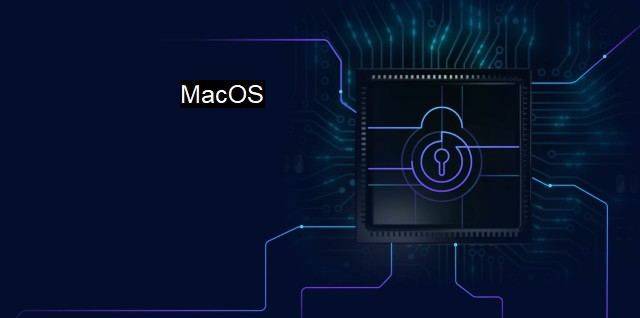What is MacOS?
The Truth About MacOS' Security Against Malware and Viruses: Dispelling the Myth of Invincibility
"MacOS," formerly known as OS X or Mac OS X, is an exceptional proprietary operating system developed by Apple Inc for their Mac family of computers. It operates with a UNIX-based framework with powerful features to support the productivity, entertainment, and multimedia needs of Apple users. Over the years, Apple has routinely updated and upgraded MacOS to include numerous features and protections, reinforcing the operating system's reputation for security.Cybersecurity and antivirus concerns have been significant in the digital age due to the potential for data breaches and harm of individual users, organizations, or even governments. Being a more closed operating system than many competitors, MacOS has a built-in protective mechanism that shields users from most common security threats. it is not entirely immune to infection, hence the need for cybersecurity awareness and antivirus solutions.
Unlike Windows and other platforms, MacOS employs more restrictive policies when dealing with third-party applications. Apps that aren’t accessed through the App Store have multiple safety hurdles to overcome before the system allows them. It uses Gatekeeper, an in-built security feature, to confine potentially hazardous software. Therefore, MacOS balances the software's usability with security, making it less susceptible to malware and unknown developer software.
User permissions are another relevant context in terms of MacOS’s consideration of Cybersecurity. The system implements these permissions more strictly than others, minimizing the risk of unauthorized access or changes to the system files. Developers and power users may sometimes see this as a limitation for dictating the software specialization and usability, but it helps increase security for general users.
Then comes the antivirus side. MacOS employs a real-time scanning system called XProtect. Housed in the back-section, this feature analyzes files and apps downloaded and compares them with a database of known malicious threats. macOS’s anti-ransomware tool, creatively named RansomWhere?, always monitors software attempting to create encrypted files, alerting the user to anything unusual.
With its considerable focus evident in its architecture, MacOS may seem impenetrable to malicious software or hackers at first glance. the reality is quite different. Threats affecting MacOS might be less frequent relative to those on other operating systems, but they do exist and can cause significant harm. The common misconception of MacOS being invulnerable to viruses tends to become a security threat itself in that it promotes complacency in terms of seeking out and maintaining up-to-date antivirus solutions.
Apple extensively vets the contents of its in-house app store. Microsoft Office macros malware, Adobe Flash attacks, LoJax UEFI rootkits infections, and other cross-platform threats can affect the OS indirectly. Even the integrated Mac App Store isn't entirely void of suspicious apps as security researchers occasionally unearth surprising insecurities.
It is also plausible that companies or entities capable of creating new types of infiltration and gaining unauthorized access to MacOS could utilize these methods for cyber espionage. The criminal aim isn't necessarily always to release this malware and infect as many computers as possible but to target carefully chosen MacOS users in response to their lax security standing.
As a conclusion, it is important to state that no operating system, MacOS included, can be entirely safe in today's digital realm. Each carries varying degrees of probabilities when it comes to succumbing to security vulnerabilities. But with Apple's built-in security features and its proactive approach towards existing threats, MacOS continues to retain a commendable security standing when contrasted with most other operating systems. Regardless, it's crucial that MacOS users reject complacency, maintain situational awareness of cybersecurity matters, and utilize efficient antivirus solutions, even within their highly secure system environment.

MacOS FAQs
What built-in security features does macOS have?
macOS has several built-in security features, such as Gatekeeper, which ensures that only trusted software can be installed on your computer, as well as FileVault, which encrypts your hard drive to protect your data. Additionally, there is a built-in firewall and anti-malware protection.Can I use third-party antivirus software on macOS?
Yes, you can use third-party antivirus software on macOS. While macOS already has built-in security features, some users prefer the added protection and features that come with third-party antivirus software. Just make sure to research and choose a reputable antivirus software.Do I need antivirus software on my macOS device?
While macOS does have built-in security features, it is still recommended to use antivirus software as an extra layer of protection against malware and other threats. The risk of virus infection may be low for macOS devices, but it's better to be safe than sorry.How can I keep my macOS device secure?
To keep your macOS device secure, make sure to keep your software and security features up to date, use a reputable antivirus software, and be cautious when downloading or opening files from unknown sources. Also, consider using a virtual private network (VPN) for secure browsing and online activities.| | A | | | B | | | C | | | D | | | E | | | F | | | G | | | H | | | I | | | J | | | K | | | L | | | M | |
| | N | | | O | | | P | | | Q | | | R | | | S | | | T | | | U | | | V | | | W | | | X | | | Y | | | Z | |
| | 1 | | | 2 | | | 3 | | | 4 | | | 7 | | | 8 | | |||||||